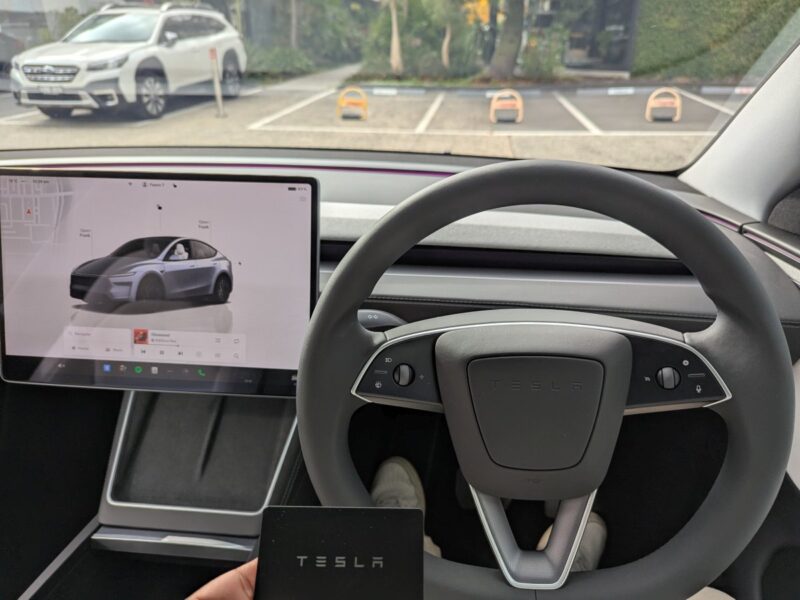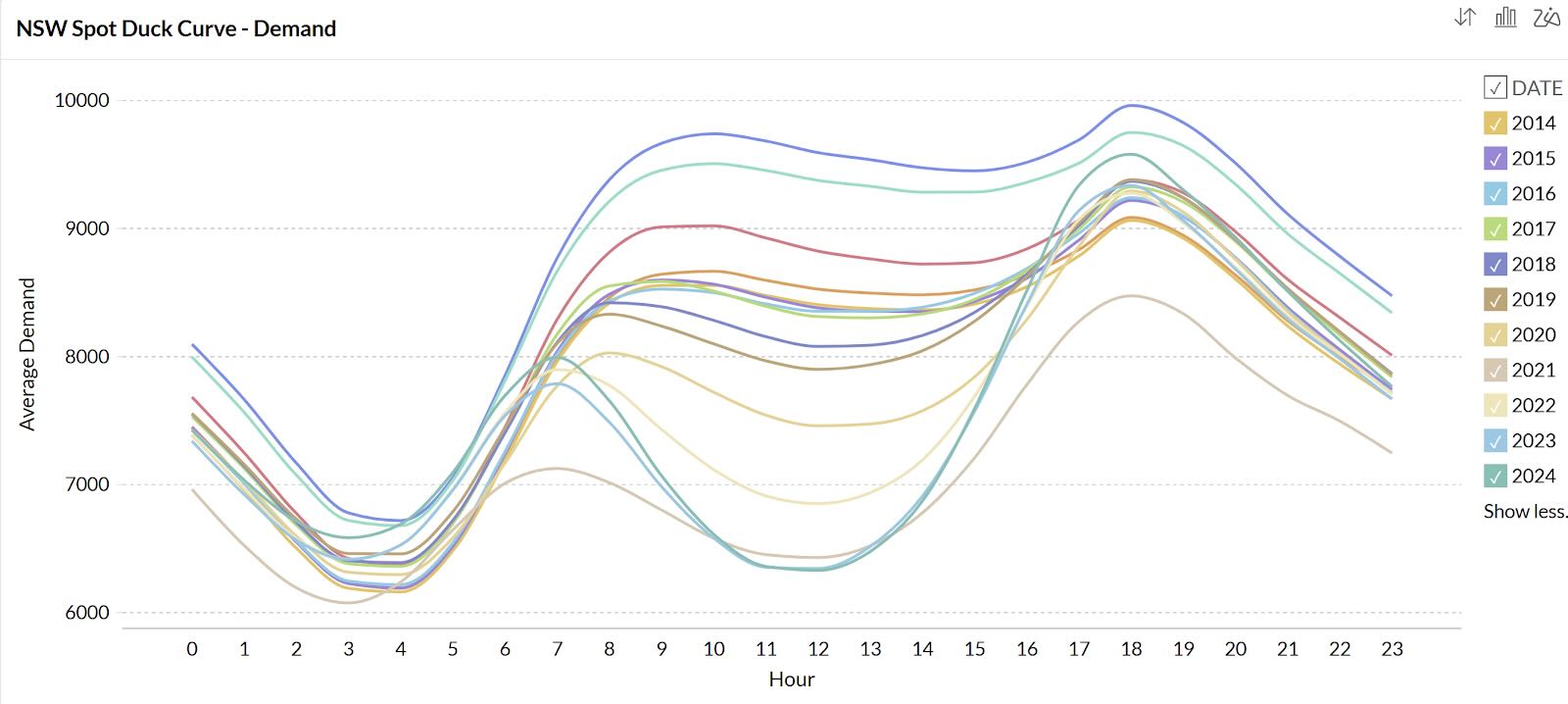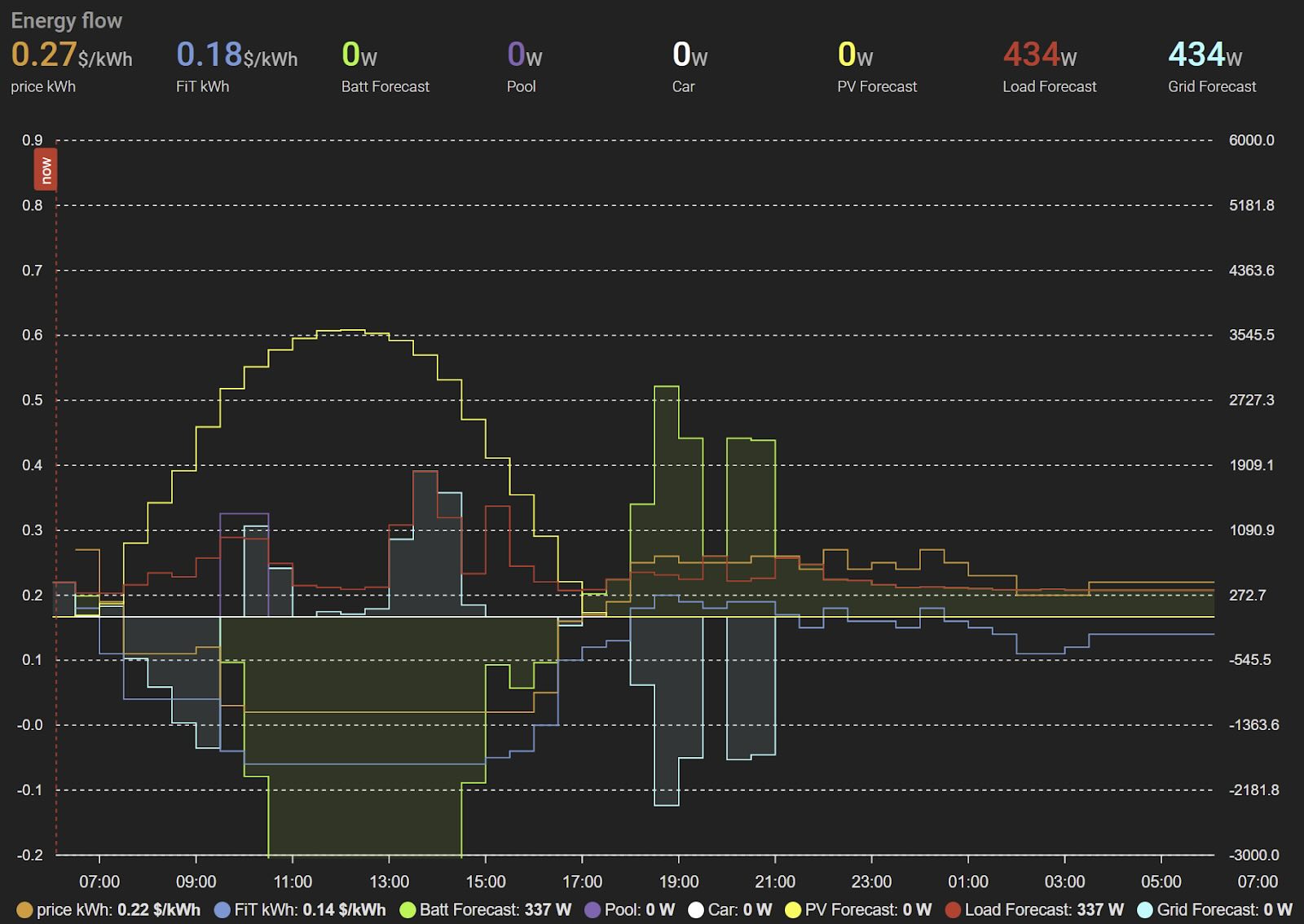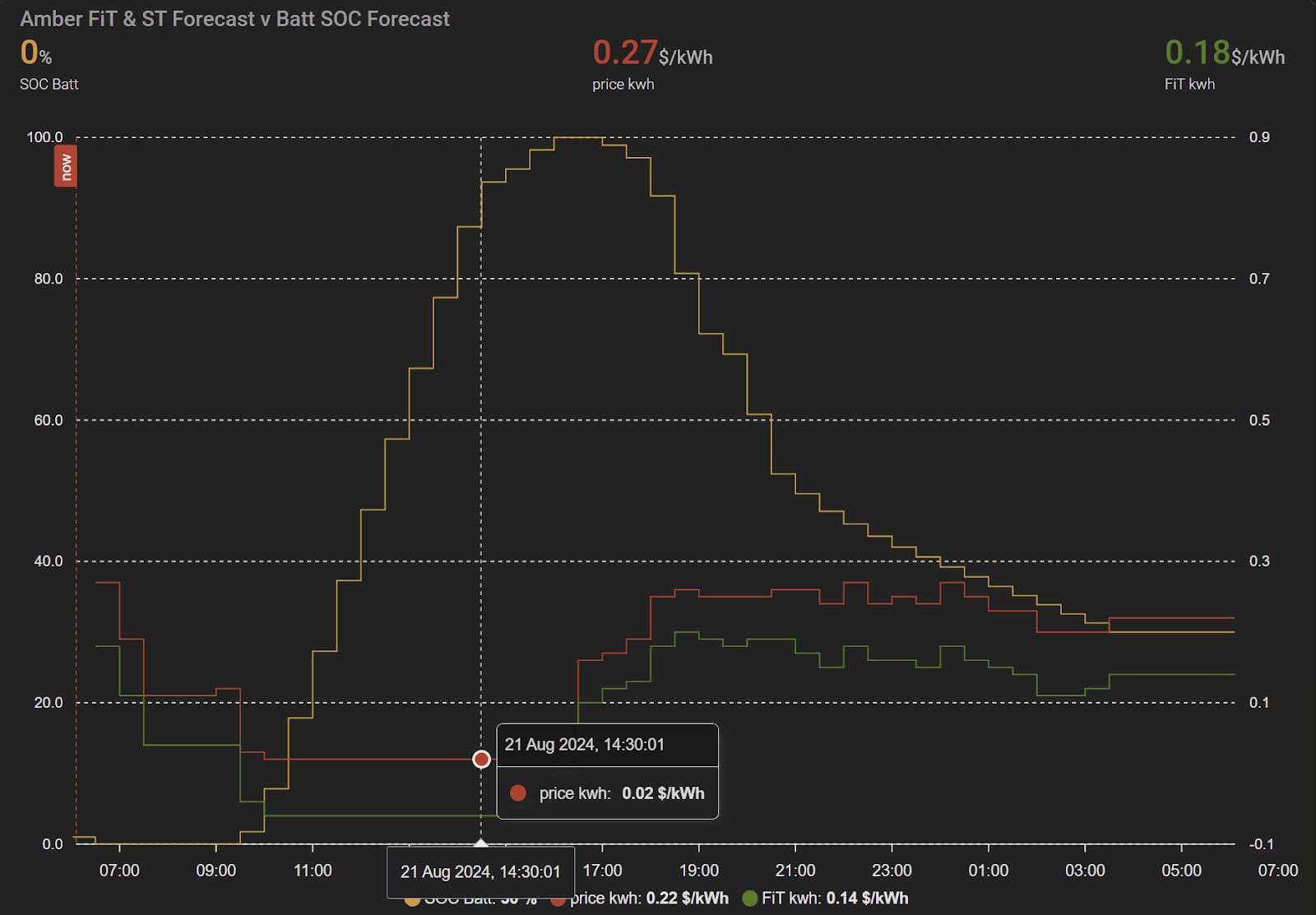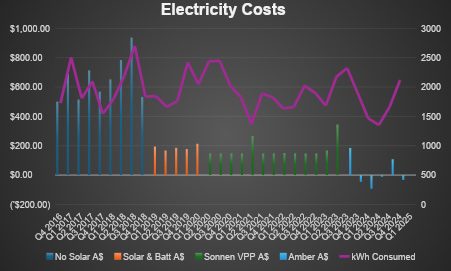I embarked on a renewable energy journey when I installed 5 kWp of solar PV cells and a home battery in January, 2019, and took receipt of my first electrice vehicle, a Tesla model 3 performance, in September of that same year.
I later upgraded to a Model Y Performance. It is easier to get into.
My battery is a sonnen eco 9.43 (German company), originally a 10kWh (9 usable) now upgraded to 15kWh, 13.8kWh usable. It’s only capable of a maximum of 3.3 kW output, so it’s not powerful by today’s standards but has a fair bit of capacity.
I started using this system in self-consumption mode. This is where the battery charges when there is available solar energy above what the home is drawing, and it discharges in preference to drawing from the grid when energy is needed in the home.
I charged the car sometimes from the wall charger (single phase ~ 7kW) that came with the car. In those days Tesla included a wall charger with their cars (as well as the mobile charger kit), but I had to pay for the charger installation.
However, mostly I charged at free chargers in four different locations all withing a few minutes’ drive from home (lucky I guess). Three 11 kW destination charger locations and one NRMA 50kW DC charger. So, I was charging the car for free, mostly, just down the road.
I started the solar system and battery on the normal time of use tariffs and feed-in tariff from the electricity company I was previously with. My electricity bill dropped from about $2,600 a year to about $750.
This was great for a while, and then I heard of Virtual Power Plants so I signed up to sonnen’s VPP, which was $49 a month for up to 7500 kWh per year and some feed-in rate that I can’t remember. This reduced my bill even further. Fantastic!
However, I then ran into an issue. More and more EVs where hitting the road and discovering the free charger locations and these free chargers started to disappear (only two destination sites left of the ones near my home).
Also, my VPP energy cap of 7500kWh PA, which I was already breaching a bit, made charging a car at home an expensive option or at least more expensive than I was used to.
The rate above the cap was ridiculous at 40 cents odd (if I remember correctly) so that would cost me about $32 to fully charge my car which had a range of about 530km WLTP with its 77.8 kWh battery.
What was I to do? I then learned of new retailer Amber Electric which charges a flat rate per month (originally $20) plus daily grid connection (something like 80 cents per day), and they then expose you to the National Energy Market (or NEM) wholesale tariffs.
These tariffs change constantly and vary widely from negative figures like -10 cents to positive figures like +$19 per kWh (wow). It’s like the stock market, buy low and sell high. It’s called spot trading apparently.
They offer their own software solution to manage your battery and car charging to match this volatility and try to make money via this spot trading on the NEM. I understand this is pretty good and usually makes good money if you have the battery power to take advantage.
However, I soon discovered that sonnen doesn’t allow access to their systems for Amber to manage the battery. I had to develop something myself that would discharge the battery in the morning when the prices go up and charge through the day when prices are low even negative only to discharge again at night when the prices go up again.
This variation in prices is called the solar duck curve, where the morning is the duck’s tail, and the evening peak is the duck’s head. (if only the stock market was this predictable, we’d all be rich).
I have used Home Assistant for a number of years to manage smart home devices and I discovered that the sonnen battery, although blocked from external access by third party vendors like Amber, is open to local control by the owner via RESTful Application Program Interface (API) commands which is a command way to send commands between computer systems.
So, I build a system to control the battery, but it wasn’t very good. I was losing money with the first monthly bill in the hundreds. Then I discovered an open source “add-on” to Home Assistant called EMHASS that uses an advanced control method to calculate plans for managing systems.
I feed in 24 hour forecasts of solar energy (from solcast.com), supply tariff, feed-in tariff (both from amber) and home consumption and tell it how long I want to charge the car and run the pool pump (and any other deferrable loads I want it to manage) and it gives me a plan to charge and discharge the home battery, charge the car and run the pool pump etc.
I do this calculation every 60 seconds and send commands to all those devices through Home Assistant managed smart switched and via the device’s API and they all sing along together in tune with the price of electricity and available solar.
Here’s an example for a 24 hour forecast:
24 hr plan
Battery charge plan and forecast of tariffs.
So far, this past two years have cost me nothing for electricity even though I’m mostly charging the car at home now. Some months are up and some are down, but always in credit (so far).
One of the most important things I’ve learned is not so much all the computer programming and home automation, but the importance of load shifting and which loads to shift and when.
I also moved from gas heating to reverse cycle aircon, so that’s another $500 per annum saving. I still have instant gas hot water and cook top, though, so that’s next on the list of things to do.

